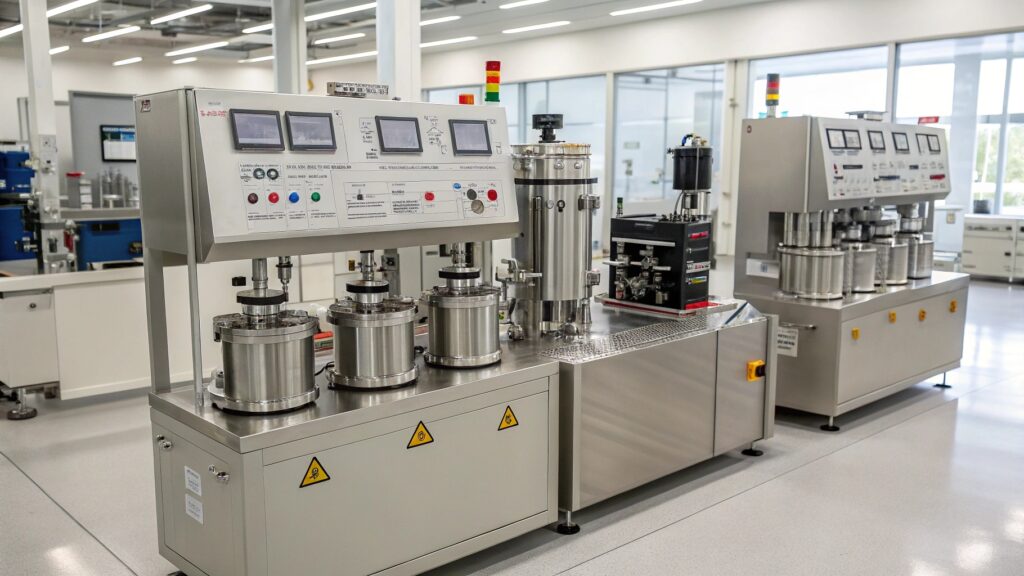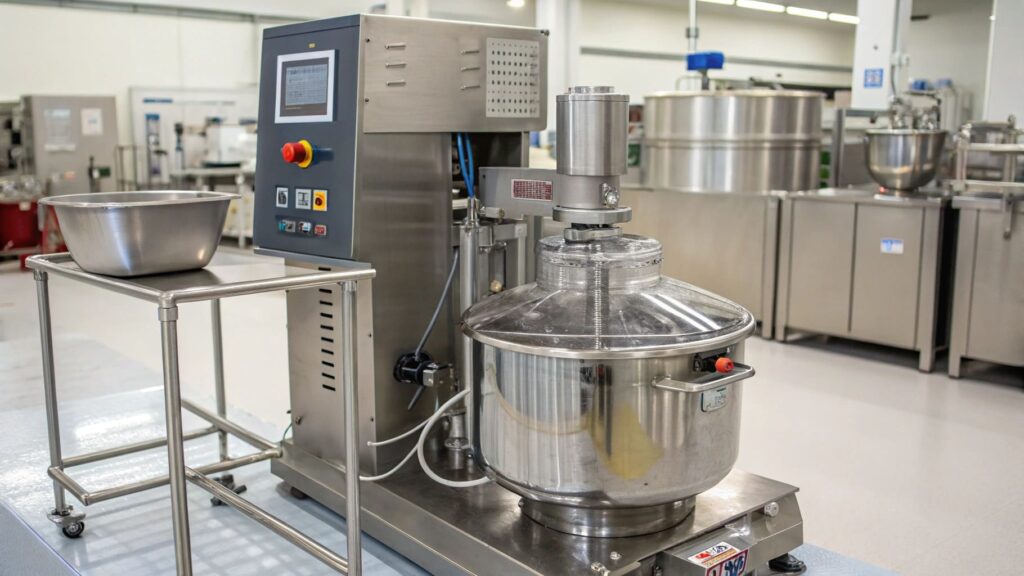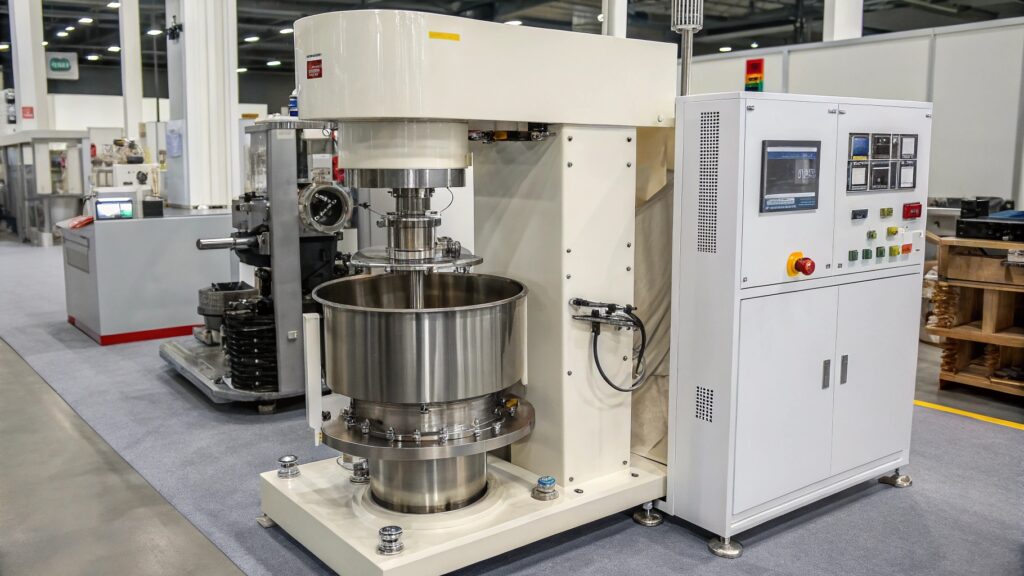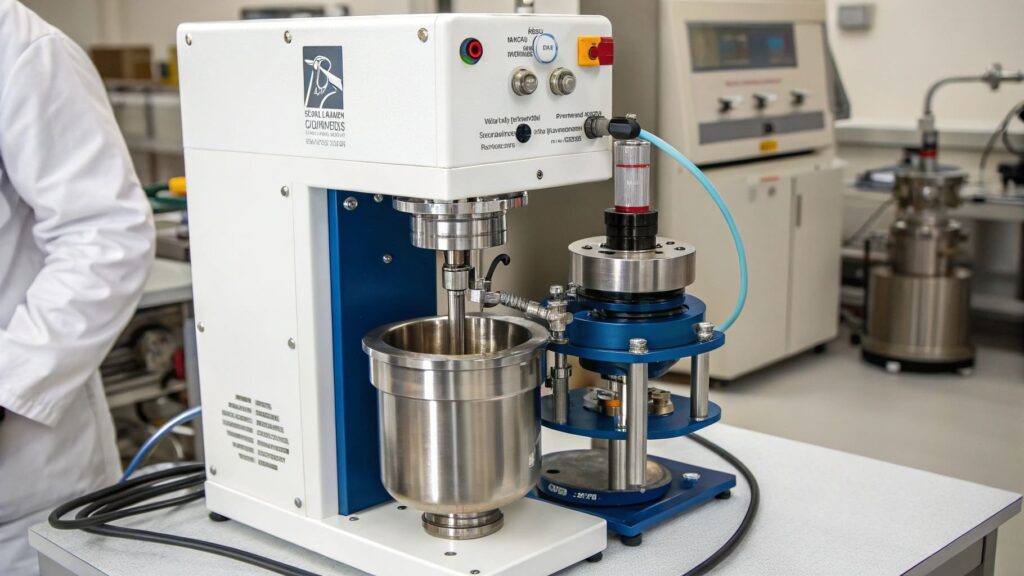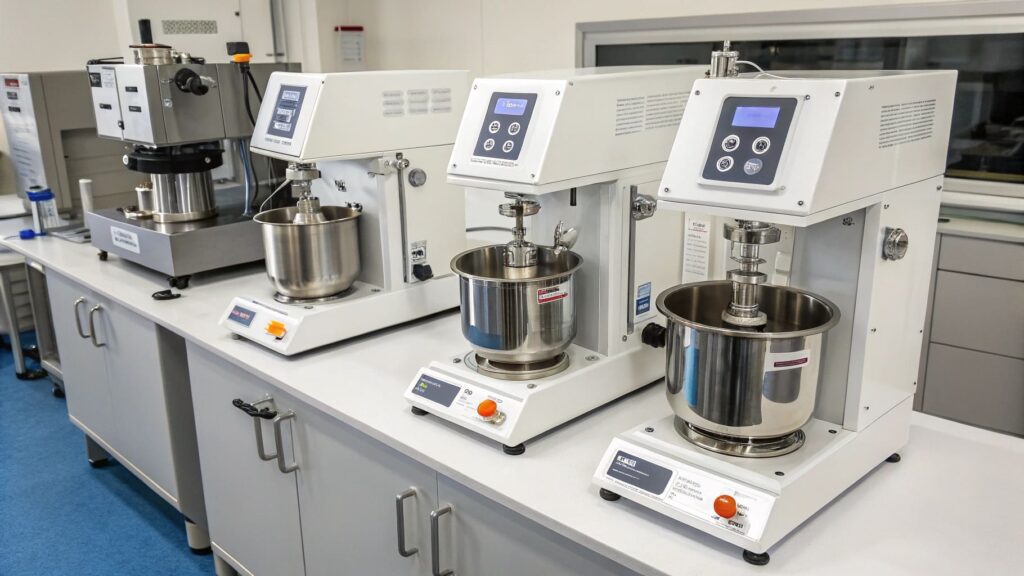As Ronnie Guo, CTO of MIXERSTAR, I’ve worked with various mixing machines for over a decade. They each solve unique problems in industries like chemicals and food. Understanding their differences helps choose the right tool for efficient production.
A planetary mixer stands out with its dual motion for thorough mixing, but other equipment like dispersers and kneaders offer specialized benefits. This guide compares them based on my experience, highlighting key features and applications to aid your selection process.
This is just the start. Let’s dive into specific comparisons to see how each machine fits into your operations and improves outcomes.
What sets a planetary mixer apart from a high-power disperser?
The choice between these can impact mixing efficiency. I’ve seen clients confuse them, leading to suboptimal results in high-viscosity applications.
A planetary mixer differs from a high-power disperser by using a slower, more uniform mixing action with planetary motion, while the disperser focuses on high-speed shear for rapid blending.
Breaking Down the Key Differences
Planetary mixers have two or three stirring paddles that both rotate and revolve, plus a scraper for walls and bottom. This ensures even mixing without dead spots. High-power dispersers, however, use high-speed blades for intense shear, ideal for breaking down particles quickly. From my work at MIXERSTAR, a planetary mixer’s gentle approach suits delicate materials, like in battery slurry, while dispersers excel in paints and adhesives.
Consider this table for clarity:
| Feature | Planetary Mixer[^1] | High-Power Disperser[^2] |
|---|---|---|
| Mixing Motion | Planetary rotation and revolution | High-speed shear and scraping |
| Best For | Uniform blending of thick pastes | Rapid dispersion of solids in liquids |
| Speed Control | Variable frequency for precision | High RPM for fast processing |
| Common Sizes | 5L to 2000L | 5L to 6000L |
In one project, I helped a chemical company switch from a disperser to a planetary mixer for better consistency in sealants, reducing waste by 15%. Check our medium-scale planetary mixers for options that might fit your needs.
How does a power mixer compare to a planetary mixer?
Power mixers and planetary mixers both handle complex mixing, but their designs lead to different outcomes. I’ve guided clients through upgrades that boosted their production lines.
A power mixer compares by offering similar dual motions but with enhanced shear for tougher materials, making it faster for certain high-viscosity tasks compared to the more versatile planetary mixer.
Exploring the Distinctions
Power mixers feature high-speed dispersion shafts[^3] and low-speed stirring paddles that can both revolve and rotate, providing strong shear and kneading. Planetary mixers focus on uniform blending[^4] with less emphasis on high shear. Based on my experience, power mixers are ideal for industries needing rapid mixing, like silicone rubber production, while planetary mixers handle a broader range of viscosities.
Here’s a detailed comparison:
| Aspect | Power Mixer | Planetary Mixer |
|---|---|---|
| Primary Motion | Combined public and self-rotation with high shear | Dual planetary motion with scraping |
| Application Focus | High-shear mixing for chemicals and adhesives | General uniform mixing for food and batteries |
| Customization | Adjustable speeds for specific needs | Vacuum, heating, and cooling options |
| Size Range | 5L to 2000L | 5L to 2000L |
I once customized a power mixer for a client in the energy sector, improving their battery paste mixing time by 20%. For tailored solutions, visit MIXERSTAR’s custom mixing page.
What’s the role of a press machine in relation to mixers like planetary or power mixers?
Press machines often work with other equipment, but their function is distinct. I’ve seen how adding one can streamline processes in high-viscosity material handling.
A press machine aids by extruding materials post-mixing, complementing planetary and power mixers for efficient discharge, especially for thick substances.
Understanding Its Complementary Function
Press machines use hydraulic pressure to push out materials, simplifying the removal of sticky or high-viscosity mixes that planetary or power mixers prepare. Unlike mixers, they don’t blend but focus on ejection. In my projects, I’ve integrated press machines with planetary mixers for battery production, cutting cleanup time significantly.
Let’s break it down with a table:
| Function | Press Machine | Planetary/Power Mixer |
|---|---|---|
| Main Task | Material extrusion and discharge | Mixing and blending |
| Motion Type | Hydraulic pressing | Rotational and revolutionary mixing |
| Ideal Pairing | Used after mixing for flowable materials | Core equipment for preparation |
| Size Compatibility | Matches sizes like 5L to 5000L | Similar range for integration |
This setup enhances workflow, as I experienced with a cosmetics firm that reduced batch times using our press machine with a planetary mixer. Learn more about our full range on the MIXERSTAR homepage.
In what ways does a vacuum kneader differ from standard mixers?
Vacuum kneaders handle extreme viscosities that challenge other machines. I’ve shared insights on this with clients facing tough mixing scenarios.
**A vacuum kneader differs by specializing in high and ultra-high viscosity materials with kneading actions, offering better control than standard mixers for intensive processing.
Delving into High-Viscosity Applications
Vacuum kneaders use a sigma blade or similar for thorough kneading under vacuum, which removes air and prevents oxidation, unlike planetary mixers that prioritize uniform distribution. From my expertise, kneaders are perfect for doughs, rubbers, and inks, while standard mixers suit less viscous tasks. I recall customizing a vacuum kneader for a pharmaceutical company, improving gel consistency and reducing air bubbles.
Consider this analysis in a table:
| Characteristic | Vacuum Kneader[^5] | Standard Mixer (e.g., Planetary) |
|---|---|---|
| Viscosity Handling | Ultra-high, up to very sticky materials | Medium to high, but less intense |
| Key Features | Vacuum for deaeration, heating/cooling | Scraping, dual motion for uniformity |
| Typical Use | Food, rubber, and medical products | Batteries, chemicals, and food pastes |
| Size Options | 5L to 5000L | 5L to 2000L |
This difference can save time and improve quality, as seen in my consultations. Explore our large industrial mixers for more details.
How is a static mixer unique compared to dynamic mixers like planetary ones?
Static mixers lack moving parts, making them different from dynamic options. I’ve explained this to clients seeking energy-efficient solutions.
A static mixer is unique by using fixed elements and fluid flow for mixing, contrasting with planetary mixers’ mechanical action, and it’s ideal for continuous processes.
Examining Passive Mixing Technology
Static mixers rely on pressure and channel designs to create turbulence and mixing without motors, unlike planetary mixers that use rotating blades for active blending. In my experience, static mixers are great for liquid adhesives and sealants, reducing energy use and maintenance. I helped a client integrate one for polyurethane mixing, cutting costs effectively.
Here’s a simple comparison:
| Attribute | Static Mixer | Planetary Mixer |
|---|---|---|
| Mixing Mechanism | Flow-induced turbulence | Mechanical rotation and revolution |
| Energy Consumption | Lower, no moving parts | Higher due to motors |
| Application Suitability | Continuous liquid mixing | Batch processing of pastes and solids |
| Maintenance Needs | Minimal, static design | Regular for moving components |
This can optimize specific workflows, as I’ve observed. For more on our equipment, check the about page.
Conclusion
Each mixing machine has distinct strengths for different industrial needs, as I’ve learned at MIXERSTAR, helping choose the best for your process.
External link
[^1]: Explore the benefits of planetary mixers for uniform blending, especially for delicate materials like battery slurry.
[^2]: Learn about high-power dispersers and their effectiveness in rapidly dispersing solids in liquids, ideal for paints and adhesives.
[^3]: Understanding high-speed dispersion shafts can enhance your knowledge of mixing technologies and their industrial applications.
[^4]: Exploring uniform blending will provide insights into its significance in achieving consistent product quality across various industries.
[^5]: Explore the advantages of Vacuum Kneaders for various industries, including food and pharmaceuticals, to enhance product quality and consistency.

